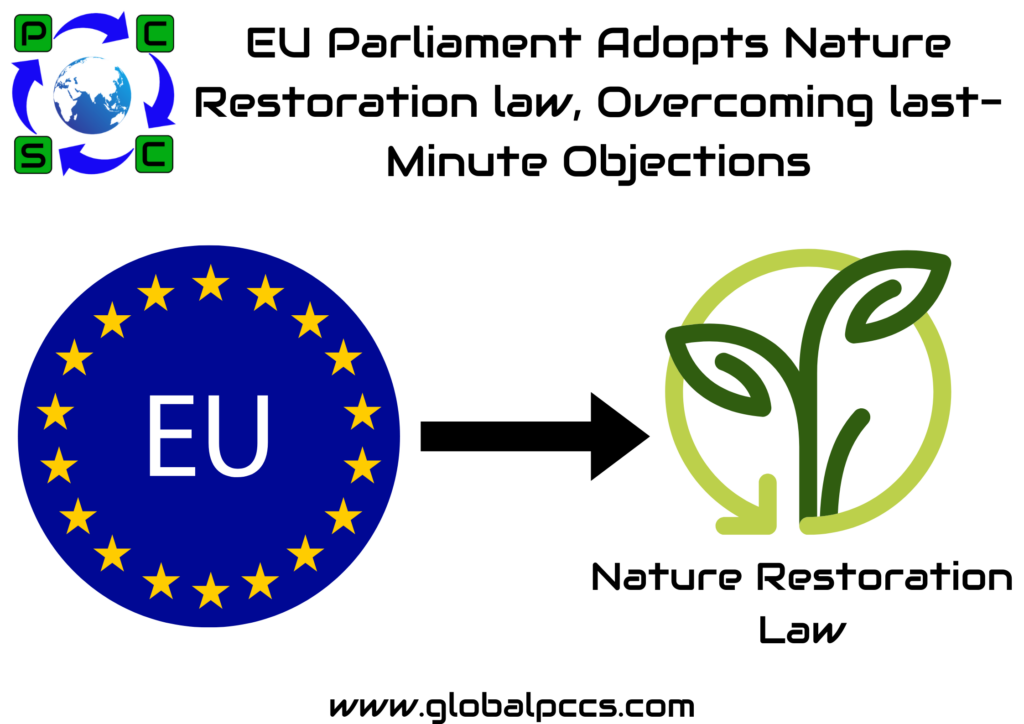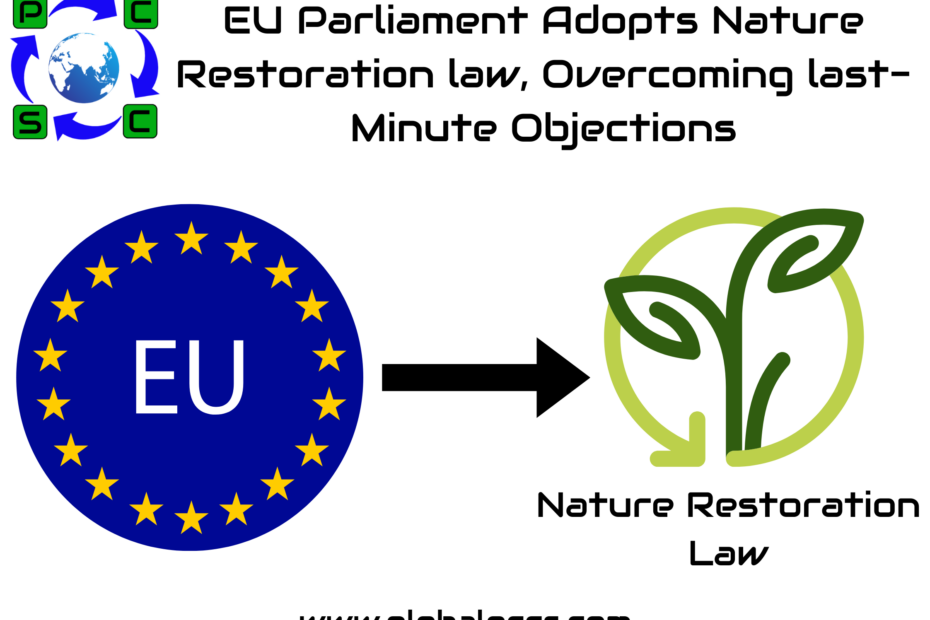 The European Parliament announced that it has aimed at restoring and protecting natural habitats and ecosystems, including a mandated target for EU countries to implement measures to restore at least 20% of the EU’s land and sea areas by 2030, and for all ecosystems in need of restoration by 2050.
The European Parliament announced that it has aimed at restoring and protecting natural habitats and ecosystems, including a mandated target for EU countries to implement measures to restore at least 20% of the EU’s land and sea areas by 2030, and for all ecosystems in need of restoration by 2050.
The new law passed with a narrow majority of 329 votes in favor, with 275 against and 24 abstentions, after the European People’s Party (EPP), the largest party in Parliament, announced earlier that it would vote against the legislation, citing concerns about the new law’s impact on farmers, including increased bureaucracy and reporting obligations.
The new proposed law narrowly survived the Parliamentary approval process last year, also following a campaign led by the EPP, on claims that the proposals would threaten food security and agriculture, and would work against Europe’s clean energy and climate goals, by reducing capacity of energy sources such as hydropower and biomass. In order to achieve approval, the legislation included a series of adjustments from the initial proposal, including the addition of a new article ensuring that the law does not block renewable energy infrastructure projects overwhelmingly in the public interest, and requiring the EU Commission to provide data on conditions necessary to guarantee long-term food security.
A proposed EU law aimed at restoring and protecting natural habitats and ecosystems narrowly survived a rejection vote in the European Parliament, enabling the legislation to proceed to the negotiation stage between Parliament and the EU Council.
The proposed Nature Restoration Law was introduced by the European Commission in June 2022, aimed at enabling a sustained recovery of degraded ecosystems, as well as contributing to the EU’s climate objectives, and forming a key element of the EU Biodiversity Strategy.
The proposed law contains several targets covering areas including the improvement and re-establishment of biodiverse habitats in wetlands, grasslands, forests, rivers and lakes and other ecosystems, reversing the decline of pollinating insect populations, maintaining green urban space, restoring drained peatland under agricultural use, and restoring marine habitats, among others.
A campaign pushing back against the proposed law led by the European People’s Party (EPP), however, put the future of the law in jeopardy, with the European Parliament’s Environment committee’s vote on its proposed version of the law failing to reach a majority last month, and a motion to reject the law tabled for a full vote in Parliament.
Opponents of the law raised a series of objections, including claims that the proposals would threaten food security and agriculture, and would work against Europe’s clean energy and climate goals, by reducing capacity of energy sources such as hydropower and biomass.
The initial proposal was launched by the European Commission in June 2022, with an objective to restore ecosystems, habitats and species across the EU’s land and sea areas, with studies indicating that more than 80% of European habitats are in poor shape.
Under the new legislation, member states will be required to put into place restoration measures to restore at least 30% of habitats that are in poor condition by 2030, increasing to 60% by 2040, and 90% by 2050, and to regularly submit national restoration plans indicating how they will deliver on the targets.
The law sets out specific requirements for different types of ecosystems, covering wetlands, grasslands, forests, rivers and lakes, as well as marine ecosystems such as seagrass and sponge and coral beds.
Additional regulations under the legislation include a requirement for member states to set out measures to reverse the decline of pollinator populations, put in place restoration measures for organic soils in agricultural use constituting drained peatlands, viewed as one of the most cost-effective measures to reduce emissions in the agricultural sector and improve biodiversity, an efforts-based requirement to prevent significant deterioration of areas subject to restoration that have reached good condition, and to achieve an increasing trend in urban green areas.
Following Parliament’s position, the law also includes an “emergency brake” to suspend its agricultural ecosystem targets if they severely reduce the land needed for sufficient food production for EU consumption.
The new legislation will now need to be adopted by the EU Council prior to entering into force. Member states will be required to submit their first nature restoration plans within two years after the law’s entry into force.








 Authorised IMDS & CDX Training & Consulting partner for
Authorised IMDS & CDX Training & Consulting partner for






